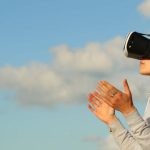Augmented Reality (AR) technology has revolutionized the way we shop, offering a unique and immersive experience that enhances the traditional retail experience. By overlaying virtual elements onto the real world, AR has the power to transform how consumers interact with products and make informed purchasing decisions. Let’s delve into how AR is reshaping the shopping landscape and providing customers with a more engaging and personalized shopping experience.
Enhanced Product Visualization
One of the key ways in which augmented reality enhances shopping is through enhanced product visualization. AR allows customers to see products in a more realistic and interactive way than traditional images or videos. By using AR-enabled devices such as smartphones or tablets, shoppers can superimpose virtual images of products into their physical environment. This technology provides a 3D view of the product, allowing customers to rotate, zoom in, and explore the item from all angles. This immersive experience helps shoppers make more informed decisions by giving them a better sense of the product’s size, design, and functionality.
Virtual Try-Ons
Augmented reality is also revolutionizing the way we shop for clothing and accessories through virtual try-on features. With AR-powered applications, customers can virtually try on clothes, shoes, and accessories without having to physically visit a store. By using their device’s camera, shoppers can see how a particular garment or accessory looks on them in real-time. This virtual try-on experience eliminates the need for fitting rooms and provides a convenient way for customers to see how an item fits and complements their style before making a purchase.
Personalized Recommendations
AR technology is enabling retailers to offer personalized product recommendations based on customer preferences and behavior. By analyzing data such as past purchases, browsing history, and social media interactions, retailers can create personalized shopping experiences tailored to each customer. AR-powered applications can suggest products that align with a customer’s style, size, and color preferences, making the shopping experience more efficient and enjoyable. This personalized approach not only enhances customer satisfaction but also increases the likelihood of repeat purchases and brand loyalty.
Interactive Shopping Experiences
Augmented reality brings a new level of interactivity to the shopping experience, allowing customers to engage with products in a more dynamic way. AR-powered applications can incorporate interactive features such as gamification, quizzes, and product demonstrations to make the shopping process more engaging and entertaining. By gamifying the shopping experience, retailers can create a sense of fun and excitement that encourages customers to explore products and make purchases. Interactive AR elements can also educate customers about product features, benefits, and uses, helping them make informed decisions.
Seamless Online and Offline Integration
Another way in which AR enhances shopping is by seamlessly integrating the online and offline retail experiences. With AR technology, customers can bridge the gap between physical stores and e-commerce platforms, creating a unified shopping journey. By scanning a product in-store with an AR-enabled device, customers can access additional product information, customer reviews, and online purchasing options. This seamless integration allows customers to make informed decisions whether they are shopping in-store or online, creating a more cohesive and convenient shopping experience.
Enhanced Customer Engagement
Augmented reality enhances shopping by increasing customer engagement and interaction with brands. AR-powered applications can create immersive brand experiences that captivate customers and leave a lasting impression. By incorporating AR elements such as interactive product showcases, virtual fitting rooms, and AR-powered games, retailers can attract and retain customers’ attention in a crowded marketplace. This heightened engagement not only drives sales but also builds brand loyalty and advocacy among customers who appreciate the innovative and personalized shopping experience.
Innovative Marketing Opportunities
Augmented reality opens up new and innovative marketing opportunities for retailers to connect with customers in creative ways. By leveraging AR technology, retailers can create interactive advertising campaigns that engage customers and drive brand awareness. AR-powered marketing initiatives such as virtual try-on experiences, location-based promotions, and interactive product demonstrations can capture customers’ interest and encourage them to explore products and make purchases. This innovative approach to marketing not only differentiates brands from competitors but also positions them as forward-thinking and customer-centric.
In conclusion, augmented reality is transforming the shopping experience by offering enhanced product visualization, virtual try-ons, personalized recommendations, interactive shopping experiences, seamless online and offline integration, enhanced customer engagement, and innovative marketing opportunities. As retailers continue to adopt AR technology, customers can expect a more immersive, engaging, and personalized shopping experience that blurs the lines between the physical and digital worlds. AR is not just a trend but a powerful tool that is reshaping the future of retail and setting new standards for customer engagement and satisfaction.





